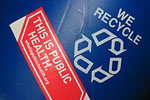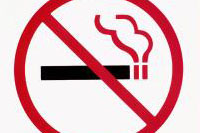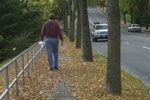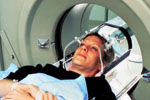In 1970, when the UW School of Public Health was founded, smog cast a brown cloud over the city, people smoked almost everywhere, and raw sewage flowed into some streams and lakes. We have come a long way since then. To mark National Public Health Week April 2-8, 2012, here are some measures of our progress and the ongoing research at SPH that ensures our communities continue to get healthier.

Clean Air
From 1970 to 2010, the Clean Air Act prevented an estimated 365,000 premature deaths. SPH researchers Joel Kaufman and Sverre Vedal are key parts of current national efforts to understand the effects of air pollution on cardiovascular health.

Clean Water
An estimated 780 million people worldwide lacked safe drinking water in 2010. Judd Walson is planning a large trial to study the benefits of adding a point-of-use water filtration device as part of AIDS prevention efforts in Kenya.

Vaccine & Infectious Diseases
In 1900, infectious diseases killed thousands of Americans – approximately 7,500 from measles and 13,000 from diphtheria alone. Vaccine-preventable diseases persist, particularly in developing countries; about 30 SPH faculty are involved in vaccine research. Lisa Jackson is one of them, studying vaccine safety and efficacy.

Nutrition
In 1916 scientists discovered vitamins' role in preventing disease. Since then, nutrition programs have shifted focus to chronic conditions such as cardiovascular disease and obesity. Adam Drewnowski, Director of the Center for Public Health Nutrition, is currently studying the relationship of poverty and obesity.

Physical Activity
In the U.S. cities of the early 1900s, people walked to the store or to the streetcar. The Health Promotion Research Center is trying to get people walking again in what is now a car-centric culture. Its EnhanceFitness exercise class is a 15-year collaboration with two community partners, Senior Services and Group Health, to develop, test, disseminate, and evaluate fitness activities.

Workplace Health & Safety
In 1913, the U.S. Bureau of Labor Statistics reported a rate of 61 deaths per 100,000 workers; by 2010 it had dropped to 3.5. Still, many workplaces, especially in agriculture and construction, can be hazardous. Our Department of Environmental and Occupational Health Sciences works on prevention, treatment, and education of an increasingly diverse workforce.

Infant Mortality
Infant mortality in the United States decreased by 90 percent during the 20th century, largely because of improvements in environment, nutrition, clinical medicine, health care access, and disease surveillance. Our Global Center for Integrated Health of Women, Adolescents and Children (Global WACh) is working to make possible similar improvements in communities worldwide.

Waste Reduction
Seattle recycles more than half of its solid waste, a 15 percent increase over the 2003 rate – and 20 percent above the national average. Washington is the second state in the nation to require recycling of mercury-containing light bulbs, starting in 2013.

Chronic Disease
Chronic diseases - such as heart disease, cancer, and diabetes - are the leading causes of death and disability in the United States. Four modifiable risk behaviors—lack of physical activity, poor nutrition, tobacco use, and excessive alcohol consumption—are responsible for much of this illness. Our Nutritional Sciences Program, Social and Behavioral Science faculty, and Health Promotion Research Center are researching effective ways to change these behaviors.

Injury Prevention
Harborview Injury Prevention and Research Center, founded in 1985, is a worldwide leader in understanding and preventing injuries. Approximately 40 full-time faculty and staff are devoted to research, education and prevention programs. In the area of motor-vehicle safety alone, safety belts, child safety seats, and motorcycle helmets have decreased fatalities and injuries.

Health Impact Assessments
Health Impact Assessments (HIAs) measure the health effects of policies, plans, and projects; they help decision-makers recognize the health consequences of their actions. SPH is one of only five schools in the country to offer a graduate-level course in this specialty. Andrew Dannenberg is one of its leading advocates.

Smoking
Smoking – once a widely accepted behavior – is the leading preventable cause of death and disability in the United States. HealthLinks, a workplace wellness program developed by the Health Promotion Research Center and the American Cancer Society, offers smoking cessation programs.

Healthy Cities
Urban planning, transportation policy, and green spaces can all enhance health. Dean Howard Frumkin is a leading advocate of healthy city design and has co-authored "Urban Sprawl and Public Health" and, most recently, "Making Healthy Places." He is part of widespread efforts to encourage more walkable, pedestrian-friendly environments.

Cost-Effective Health Care
Health care can be expensive, and state and federal health initiatives want to know that treatments are effective. Larry Kessler, chair of our Department of Health Services, studies the cost-effectiveness and diagnostic value of cancer screening technology. Before coming to UW, he headed the FDA's Office of Surveillance and Biometrics, which is responsible for the safety and effectiveness of medical devices once they have reached the market.